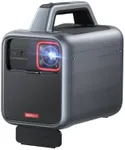Buying Guide for the Best Outdoor Projectors
Choosing the right outdoor projector can significantly enhance your outdoor entertainment experience, whether it's for movie nights, sports events, or presentations. To make an informed decision, it's important to understand the key specifications and how they align with your specific needs. Here are the main factors to consider when selecting an outdoor projector.Brightness (Lumens)Brightness, measured in lumens, determines how well the projector can display images in various lighting conditions. For outdoor use, higher brightness is crucial to ensure clear visibility, especially if you plan to use the projector during the day or in areas with ambient light. Projectors with 2,000 to 3,000 lumens are suitable for nighttime use in dark environments, while those with 3,000 to 5,000 lumens or more are better for daytime use or areas with some ambient light. Choose a projector with higher lumens if you expect to use it in brighter conditions.
ResolutionResolution refers to the number of pixels that make up the image on the screen, affecting the clarity and detail of the picture. Common resolutions include 720p (HD), 1080p (Full HD), and 4K (Ultra HD). For outdoor projectors, higher resolution is generally better, as it provides a sharper and more detailed image. If you plan to watch high-definition content or use a large screen, a 1080p or 4K projector is recommended. For casual viewing or smaller screens, 720p may suffice.
Contrast RatioThe contrast ratio measures the difference between the darkest and brightest parts of an image. A higher contrast ratio results in more vibrant and dynamic images, with deeper blacks and brighter whites. For outdoor projectors, a contrast ratio of at least 1,000:1 is recommended, but higher ratios like 10,000:1 or more will provide better image quality, especially in low-light conditions. Consider a higher contrast ratio if you want more vivid and lifelike images.
Throw DistanceThrow distance is the distance between the projector and the screen, which affects the size of the projected image. Projectors are categorized into short throw, standard throw, and long throw. Short throw projectors can create large images from a short distance, making them ideal for smaller outdoor spaces. Standard throw projectors require more distance and are suitable for medium to large spaces. Long throw projectors are best for very large areas. Choose a projector based on the size of your outdoor space and how far you can place the projector from the screen.
PortabilityPortability refers to the ease with which you can move and set up the projector. For outdoor use, a lightweight and compact projector is more convenient, especially if you plan to transport it frequently. Look for projectors with built-in handles or carrying cases for added convenience. If you need a projector that you can easily move around or take on trips, prioritize portability.
ConnectivityConnectivity options determine how you can connect the projector to various devices, such as laptops, smartphones, or streaming devices. Common connectivity options include HDMI, USB, VGA, and wireless connections like Wi-Fi or Bluetooth. Ensure the projector has the necessary ports and wireless capabilities to connect to your preferred devices. If you plan to stream content or connect multiple devices, look for a projector with versatile connectivity options.
Durability and Weather ResistanceDurability and weather resistance are important for outdoor projectors, as they need to withstand various environmental conditions. Look for projectors with rugged designs, water resistance, and dust protection. Some projectors are specifically designed for outdoor use and come with weatherproof features. If you plan to leave the projector outside for extended periods or use it in harsh weather conditions, prioritize models with higher durability and weather resistance.
Sound QualitySound quality is crucial for an immersive outdoor viewing experience. While many projectors come with built-in speakers, they may not always provide the best audio quality. Consider projectors with high-quality built-in speakers or the ability to connect to external speakers or sound systems. If sound quality is important to you, look for projectors with good audio output or compatibility with external audio devices.

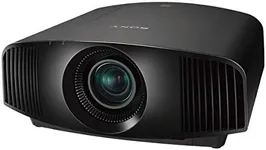
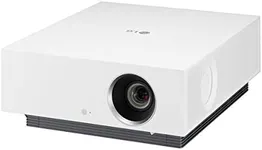

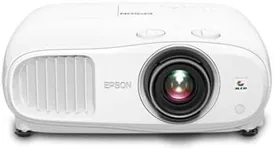
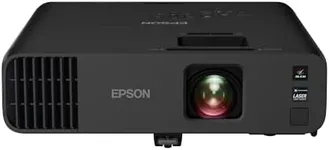
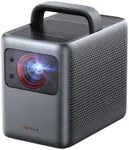
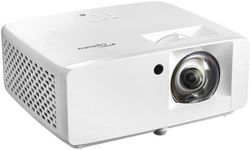
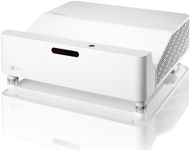



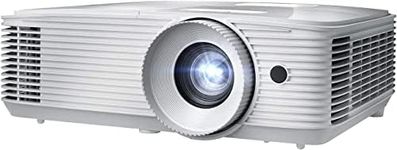
![[AI Auto Focus+Auto Lens Cap]Outdoor-Projector 4K with WiFi 6 and Bluetooth:Upgrade 850 ANSI Native 1080P Jimveo Portable Projector, Auto 6D Keystone&Zoom,Home LED Movie Projector for Outdoor/Home Use](https://images-proxy.bestreviews.guide/N3B-d4ZlYJNJMfomF8c_pLE8pHI=/0x150/https://m.media-amazon.com/images/I/51PuQNz4duL._AC_CX679_.jpg)

